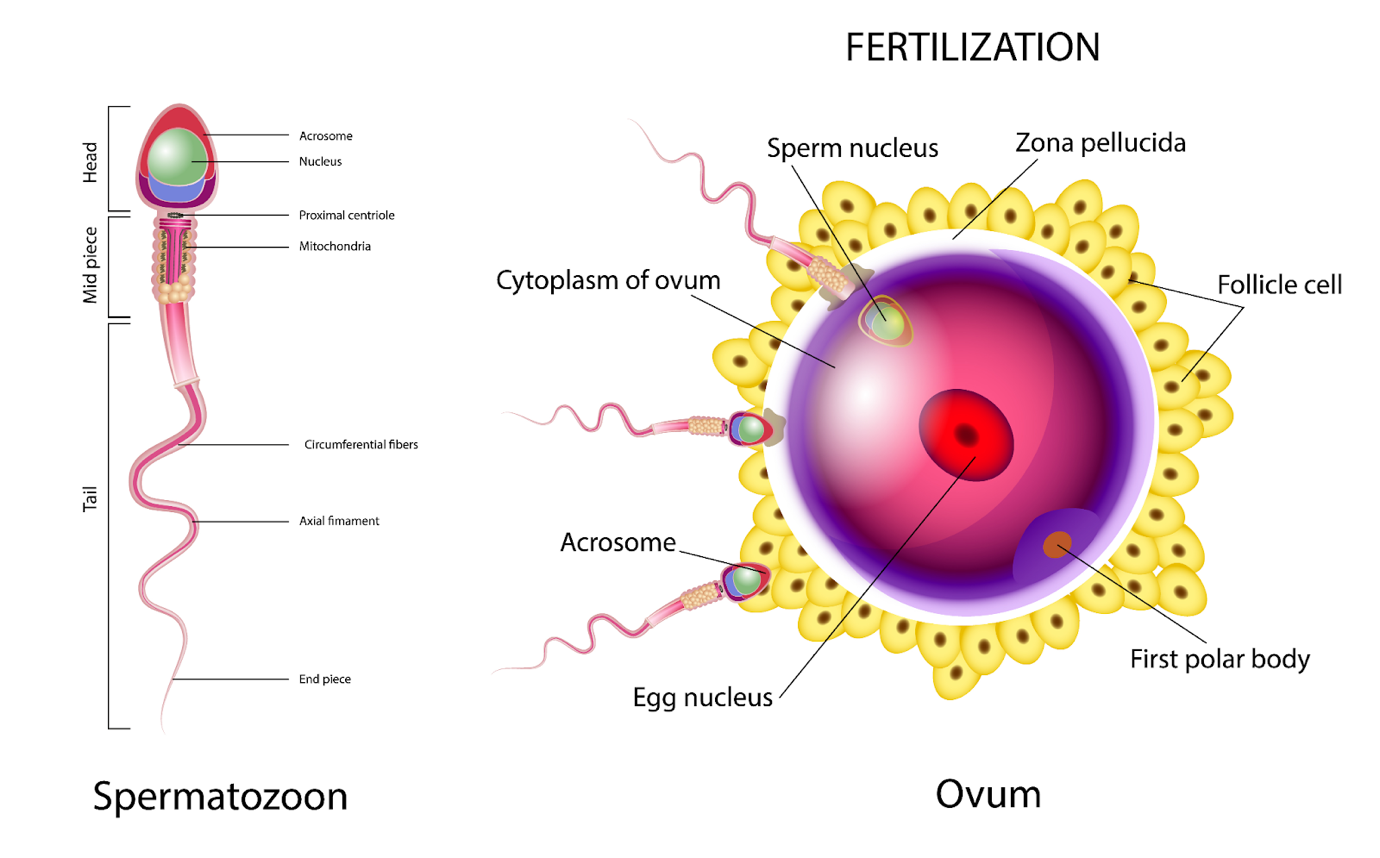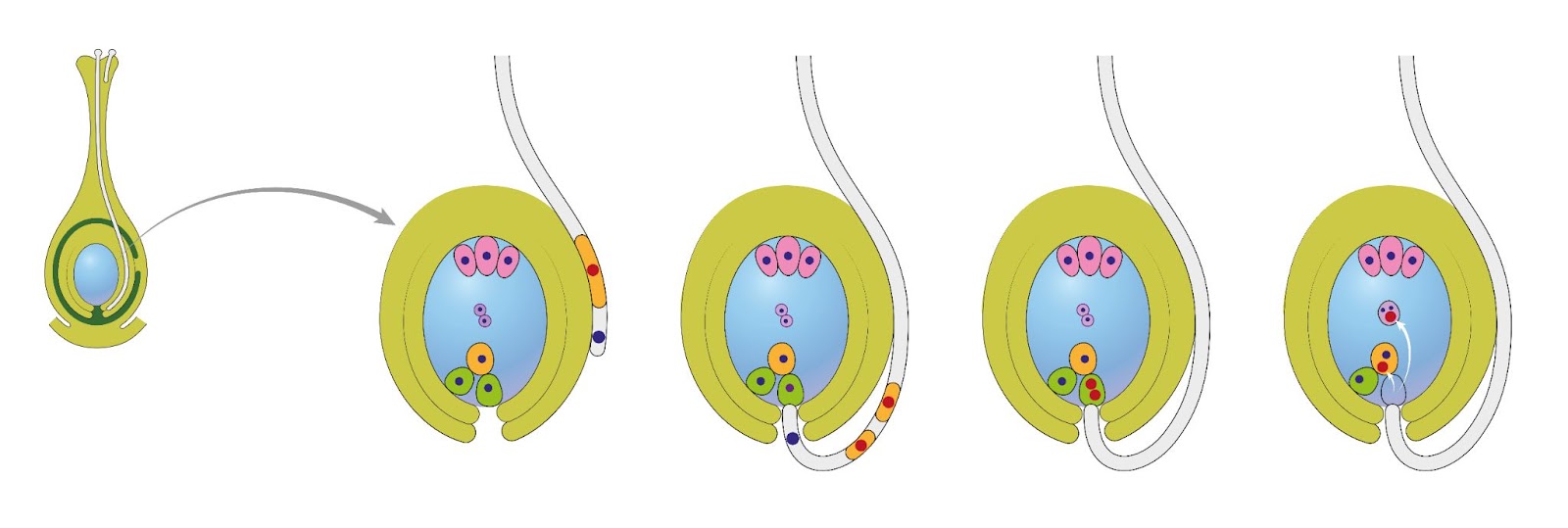Fertilization in Biology: Definition, Process, and Significance
Introduction
Fertilization is one of the most fundamental biological processes, ensuring the continuation of life across generations. It is the process by which male and female gametes (sperm and egg in animals, pollen and ovule in plants) unite to form a new organism. This union restores the diploid number of chromosomes, initiates the formation of a zygote, and triggers embryonic development. Fertilization, therefore, serves as the starting point for the development of new life and is central to sexual reproduction in nearly all multicellular organisms.
Understanding fertilization requires exploring multiple aspects, including cellular events, mechanisms of gamete recognition, evolutionary significance, and its occurrence in plants, animals, and humans.
Definition of Fertilization
In biology, fertilization is defined as the fusion of haploid male and female gametes to form a diploid zygote. This process combines genetic material from two parents, promoting genetic diversity and enabling the survival of species in changing environments.
Historical Background of Fertilization Studies
The study of fertilization has a long history. In the 17th century, Anton van Leeuwenhoek observed spermatozoa under a microscope. Later, in the 19th century, Oscar Hertwig was the first to describe fertilization in sea urchins, noting the fusion of nuclei from sperm and egg. Since then, advances in microscopy, molecular biology, and genetics have provided deeper insights into the cellular and molecular mechanisms of fertilization.
Types of Fertilization
-
Internal Fertilization
-
Occurs inside the body of the female organism.
-
Common in mammals, reptiles, birds, and some fish.
-
Offers protection to the gametes and the developing embryo.
-
Requires fewer gametes compared to external fertilization.
-
-
External Fertilization
-
Takes place outside the female body, usually in water.
-
Common in amphibians, fish, and some invertebrates.
-
Large numbers of gametes are released to increase the chances of successful fertilization.
-
Heavily dependent on environmental conditions such as water temperature and pH.
-
-
Cross Fertilization
-
Occurs between two different individuals of the same species.
-
Promotes genetic variation.
-
-
Self Fertilization
-
Occurs in some plants and hermaphroditic animals.
-
Involves gametes from the same individual.
-
Reduces genetic diversity but ensures reproduction when mates are scarce.
-
Fertilization in Animals
Process of Fertilization in Animals
The steps of animal fertilization can be broadly divided into several stages:
-
Gamete Production
-
Males produce sperm through spermatogenesis.
-
Females produce eggs (ova) through oogenesis.
-
-
Gamete Release and Transport
-
In internal fertilization, sperm are transferred to the female reproductive tract.
-
In external fertilization, sperm and eggs are released into water.
-
-
Sperm-Egg Recognition and Binding
-
Chemical signals attract sperm to the egg (chemotaxis).
-
The sperm binds to species-specific receptors on the egg membrane.
-
-
Acrosome Reaction
-
Enzymes from the sperm’s acrosome (a cap-like structure) help penetrate the egg’s protective layers, such as the zona pellucida in mammals.
-
-
Fusion of Gametes
-
The sperm plasma membrane fuses with the egg plasma membrane.
-
-
Cortical Reaction (Prevention of Polyspermy)
-
The egg releases cortical granules that modify the egg’s outer membrane, preventing additional sperm from entering.
-
-
Nuclear Fusion
-
The male and female pronuclei fuse to restore the diploid chromosome number.
-
A zygote is formed, marking the beginning of embryogenesis.
-
Fertilization in Humans
In humans, fertilization is an internal process that usually occurs in the ampulla of the fallopian tube. Millions of sperm are ejaculated, but only a few hundred reach the egg. Out of these, typically one sperm successfully penetrates and fuses with the egg, forming a diploid zygote with 46 chromosomes. This zygote undergoes cleavage and begins its journey to the uterus for implantation.
Fertilization in Plants
Fertilization in Angiosperms (Flowering Plants)
Plant fertilization is unique because of the phenomenon called double fertilization. The process includes the following steps:
-
Pollination
-
Transfer of pollen grains from the anther to the stigma.
-
-
Pollen Tube Growth
-
Pollen grain germinates on the stigma and forms a pollen tube.
-
The tube grows through the style toward the ovule.
-
-
Entry into Ovule
-
The pollen tube enters the ovule via the micropyle.
-
It carries two male gametes.
-
-
Double Fertilization
-
One male gamete fuses with the egg cell, forming a diploid zygote.
-
The second male gamete fuses with two polar nuclei to form a triploid endosperm, which nourishes the developing embryo.
-
Fertilization in Gymnosperms
In gymnosperms, fertilization involves the transfer of pollen directly onto the ovule, followed by the development of a pollen tube that delivers the sperm to the egg. Unlike angiosperms, there is no double fertilization.
Molecular Mechanisms of Fertilization
Fertilization is not merely a physical union but a highly regulated molecular process. Important mechanisms include:
-
Gamete Recognition Proteins: Proteins such as bindin in sea urchins and ZP3 in mammals ensure species-specific sperm-egg binding.
-
Signal Transduction: Binding triggers signaling pathways that prepare the egg for fusion.
-
Calcium Waves: Fertilization in animals triggers calcium release inside the egg, activating egg metabolism and embryogenesis.
-
Activation of the Egg: After fusion, the egg resumes the cell cycle, completing meiosis and starting zygotic division.
Significance of Fertilization
-
Restoration of Chromosome Number
-
Fertilization restores the diploid state by combining two haploid gametes.
-
-
Genetic Variation
-
Combines genetic material from two parents, increasing variation and adaptability.
-
-
Activation of Development
-
Fertilization triggers metabolic changes that initiate embryogenesis.
-
-
Continuation of Species
-
Ensures reproduction and survival across generations.
-
Abnormalities in Fertilization
Sometimes, errors occur during fertilization, leading to developmental issues:
-
Polyspermy: Entry of multiple sperm leads to abnormal zygotes.
-
Failed Fertilization: May result in infertility.
-
Genetic Disorders: Errors in chromosome number, such as Down syndrome, may occur during gamete formation and fertilization.
Fertilization and Assisted Reproductive Technologies (ART)
Modern science has developed techniques to assist fertilization for couples facing infertility:
-
In Vitro Fertilization (IVF): Fertilization occurs outside the body in laboratory conditions.
-
Intracytoplasmic Sperm Injection (ICSI): A single sperm is injected directly into an egg.
-
Artificial Insemination: Sperm are introduced directly into the female reproductive tract.
These technologies rely on the fundamental understanding of fertilization and have brought hope to millions worldwide.
Evolutionary Perspective of Fertilization
From an evolutionary standpoint, fertilization has been key to the success of sexual reproduction. Unlike asexual reproduction, which produces clones, fertilization introduces variation that helps species adapt to environmental changes. It has played a central role in the diversification of life forms on Earth.
Fertilization is a cornerstone of biology, ensuring the survival and continuity of life. Whether in humans, animals, or plants, the process involves intricate steps and molecular mechanisms that unite gametes, restore diploid chromosome number, and initiate development. Its significance extends beyond reproduction, contributing to genetic diversity, evolutionary adaptability, and ecological balance. With advances in biotechnology and assisted reproductive techniques, our understanding and application of fertilization continue to expand, making it not just a biological process but also a powerful tool in medicine and agriculture. At its heart, fertilization symbolizes the beginning of new life, blending genetic information from two individuals into a unique offspring. Its complexity, elegance, and universality make it one of the most remarkable processes in the natural world.
Conclusion
The process of fusing gametes to create a new individual organism or offspring and the development of that organism, is known as fertilization, also known as generative fertilization, syngamy, and impregnation. It is the union of the male and female gametes, which creates a zygote as a result, is the natural life process known as fertilization. In humans, the fallopian tube serves as the site of fertilization.
Also Check: Copulation in Biology
Thousands of sperm in semen are injected into the female vagina during coitus throughout this process. The sperm travel to the opening of the fallopian tube and then travel to the uterus. Few sperm will really make it to the fallopian tube's entrance. The secondary oocyte emerges from the ovary's mature Graafian follicle and travels into the fallopian tube, where it is fertilized within 24 hours before being discharged. The oocyte is fertilized by a sperm(Only one) while being surrounded by numerous sperm. The sperm penetrates the secondary oocyte and completes meiosis during meiosis II. The egg is then known as the secondary oocyte.
Sperm and eggs can only briefly display their vitality. In the female reproductive system, sperm can live for 48–72 hours, whereas the egg can be fertilized for up to 24 hours before being released. There are two types of fertilization observed: internal fertilization, in which the union of the egg and the sperm takes place inside the female reproductive tract, as in the case of humans; and external fertilization, in which the union of the male and female gametes takes place outside the body of the organism, as in the case of sea urchins, frogs, etc.
Figure- Fertilization in Human:
 The male sperm and female egg cells are the gametes involved in fertilization in plants. The processes by which the gametes produced by the male and female gametophytes combine and are fertilized vary among plant families. The archegonium is where sperm and eggs are fertilized in bryophyte land plants. The male gametophyte in seed plants is referred to as a pollen grain.A pollen tube grows and enters the ovule through a tiny orifice known as a micropyle after the pollen grain has germinated. The pollen tube transports the sperm from the pollen to the ovule, where they fertilize the egg. Two sperm cells are released from the pollen grain in flowering plants, and a second fertilization event occurs with the second sperm cell and the ovule's central cell, which is a second female gamete.
The male sperm and female egg cells are the gametes involved in fertilization in plants. The processes by which the gametes produced by the male and female gametophytes combine and are fertilized vary among plant families. The archegonium is where sperm and eggs are fertilized in bryophyte land plants. The male gametophyte in seed plants is referred to as a pollen grain.A pollen tube grows and enters the ovule through a tiny orifice known as a micropyle after the pollen grain has germinated. The pollen tube transports the sperm from the pollen to the ovule, where they fertilize the egg. Two sperm cells are released from the pollen grain in flowering plants, and a second fertilization event occurs with the second sperm cell and the ovule's central cell, which is a second female gamete.
Figure- Fertilization in the ovary of a plant:
